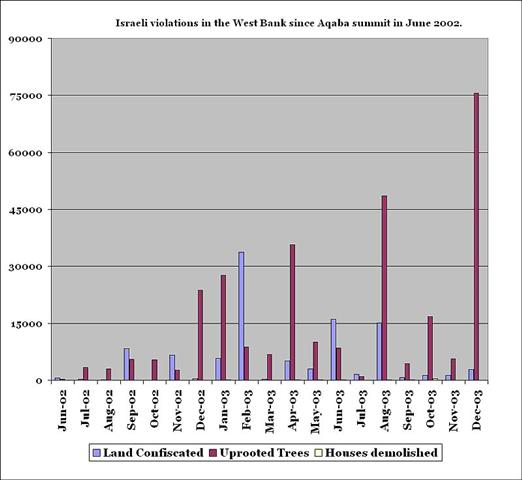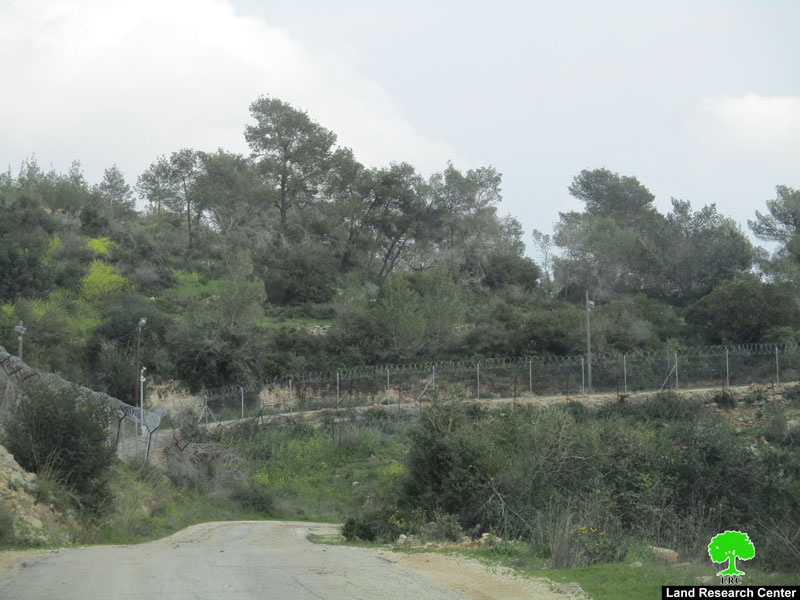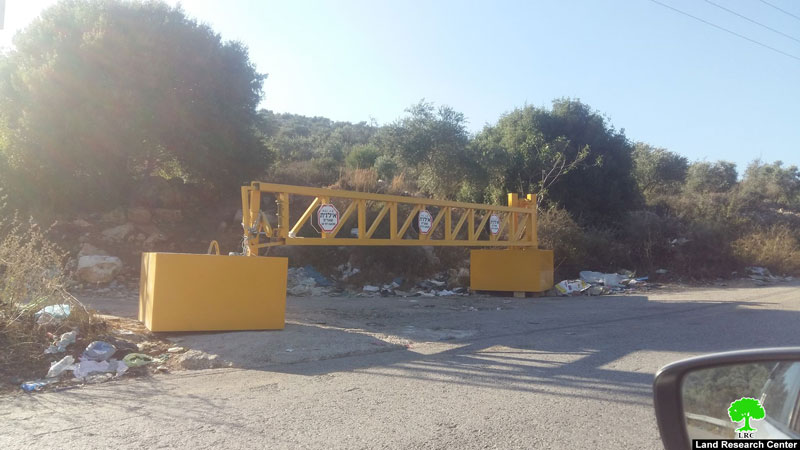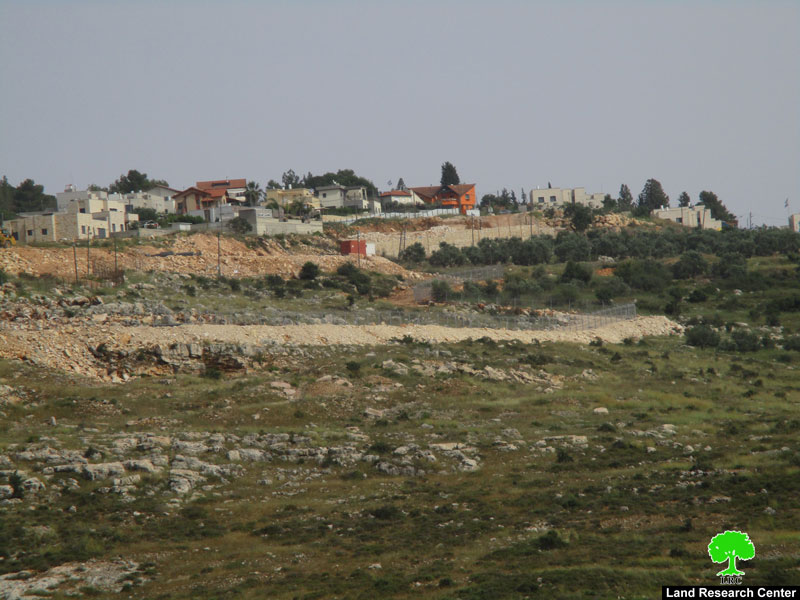Referring to our report ''New Qiryat Arba' at the northern entrance of Bethlehem city'' published on September 2003, the Israeli intentions to transform the city of Bethlehem into a big 'Ghetto' through building a religious settlement adjacent to Rachel's Tomb is clearly a negation to its acceptance of the Road Map, the initiative that was initiated in June 2002 by the Quartet (United States, Russia, EU, and the UN) in an attempt to resolve the conflict and put the peace negotiations back to its track.
According to Phase I of the 'Road Map', the Israeli government is obligated to freeze all settlement activities as set out in the Mitchell proposal. In other words, the Israelis leadership should issue statements affirming its commitment to the two-state vision of an independent, viable, sovereign Palestinian state living alongside Israel as expressed by U.S. President George W. Bush and Israel should take no actions undermining trust, including deportations, attacks on civilians, confiscation and/ demolition of Palestinian homes and property.
However, since that date, the Israeli response to the Road Map initiative has been typified by a set of violations to the conditions governing the implementation of the peace initiative. Below is a detailed table showing the Israeli violations in the West Bank since June 2002. See Graph 1: Israeli violations in the West Bank since Aqaba summit in June 2002. Throughout this period, Israel has not frozen its colonizing activities in the West Bank as can be seen in (Graph 1), in fact, the activities are continuing on a daily basis.
Rachel's Tomb and the Oslo Agreement:
According to the Oslo II Agreement signed in 1995, the location of the Tomb falls in area C of the Bethlehem district i.e. under temporary Israeli security and civil control keeping the right for Palestinians to use the main road, where Area C was supposed to be transferred to the Palestinian Authority (P.A.) within 18 months of the inauguration of the Palestinian jurisdiction council.
'a. Arrangements regarding Rachel's Tomb, which will be considered a special case during the Interim Period:
(1) While the Tomb, as well as the main road leading from Jerusalem to the Tomb, as indicated, will be under the security responsibility of Israel, the free movement of Palestinians on the main road will continue.
(2) For the purpose of protecting the Tomb, three Israeli guard posts may be located in the Tomb, the roof of the Waqf building, and the parking lot.
b. The present situation and existing practices in the Tomb shall be Preserved'. Oslo II Agreement, Annex 1, Article V, section 7).
-
September 11,2002: A confirmed story was leaked to the media at that time that the tomb was supposed to be in area A i.e. under full Palestinian security and civil control, but pressure was exerted by religious parties in Israel at the time of negotiations (1994-1995) in order to keep Rachel's tomb under Israeli control. Read related case study. The Israeli security cabinet approved to keep Rachel's Tomb under Israeli control by including the tomb within the The Israeli security cabinet approved to keep Rachel's Tomb under Israeli control by including the tomb within the separation zone.
-
On the16th of February 2003: the Israeli occupation forces – IOF- handed the residents military orders showing the lands that are going to be confiscated. The plan illustrates how the Israeli Government is going to confiscate the lands located at the northern entrance of Bethlehem and annex it to Israel.
-
On 24th ofDecember 2003, a number of Israeli bulldozers backed by Israeli military forces moved into the northern entrance of Bethlehem city and started razing 28 dunums of land belonging to the Greek Orthodox Patriarchate. They also put a number of benchmarks on the land preparing it for later confiscation and uprooted some olive trees cultivated in the site. See photo 1, photo 2, photo 3 & photo 4 taken on that date.
Detrimental consequences on the welfare of Palestinian communities and on the peace process
1-Palestinian families
On January 15, 2004, the Israeli bulldozers started razing lands belonging to Louise Handal, George Handal and Anton Handal. About 1.5 dunums of land were razed by the Israeli bulldozers making room for the Israeli plan to be implemented. See figure of the plan as provided by the Israelis
According to the plan, the Israeli government will continue constructing the Segregation Wall in the area and construct a permanent border passage on that land. This wall would affect the Palestinians living in the area and those who are going to be trapped inside the Wall. See photo 5 & photo 6
Handal's house is a typical example of the Israeli violation. It is one of the most affected by the razing process. It is few meters away from the main street and according to the Israeli plan, the razed land would be later used by Palestinians as the only path to Bethlehem city center. See photo 7.
The Segregation Wall in Bethlehem is planned to have a length of 50 kilometers and will segregate more than 70 thousand dunums from Bethlehem lands that belong to Palestinians. Israel claims that the wall will mark the 1967 border, or the Green Line, but in reality the wall is planned to be constructed more than 2 kilometers from that border inside Bethlehem. It will strangulate Bethlehem and represent an open prison for the Palestinians. For the construction of the Wall, thousands of dunums of fertile land will be confiscated and annexed to Israel, which will cause the destruction of the Palestinian agriculture and will result in severe economic and social problems to thousands of Palestinians due to the loss of their only source of living. See Map of Segregation Wall in Bethlehem.
2- The Emmanuel Monastery located on the hills outside Bethlehem is also threatened by the Israeli activities in the area. Outside the garden one gets another image, the image of the Segregation Wall knocking on the door of the Monastery. The Convent will be cut off from those Christian Palestinians and other Christians whom the Sisters of Emmanuel serve. See photo 8
The Segregation Wall will be an obstacle to many people who attend the mass at the convent which the nuns have every morning as it will surround the convent and block the main road towards it especially if they constructed the new planned checkpoint near the convent. The local leaders of the Roman Catholic, Lutheran and Anglican churches and other denominations have called for an end to what they characterized as a 'destructive' project that threatens to divide Bethlehem as well as to separate the West Bank from Israel. See Pictures below. See photo 9, photo 10, photo 11 & photo 12.
At a rally several months ago trying to save the monastery from this action the mayor of Bethlehem said that this wall will destroy the life of Palestinians in Bethlehem. He added that it will also restrict the movement of the Palestinians in and out of their country. The wall will deprive Christian people the access to the Monastery and their religious freedom.
3- Houses to be trapped inside the wall: The Segregation Wall will isolate many families living close to the northern entrance of Bethlehem city. About seven families and an industrial area would suffer from the Israeli segregation plan and the planned shifting of the checkpoint. See Map of location.
The road passing through Palestinian houses located south of the checkpoint and that was previously used has now been blocked with dirt mounds due to the razing process that is still taking place in the area. Once the wall is completed, these families will no longer have access to their businesses and parishioners in Bethlehem. See photo 13, photo 14 & photo 15.
4-Bethlehem checkpoint: Bethlehem main checkpoint, also known 'Gilo 300 checkpoint' will be shifted 220 meters south of its recent location towards Bethlehem, thus increasing hindrance to Palestinian mobility, additional Palestinian land razing, and restrictions on the freedom of worship based on decreased access to religious sites within Jerusalem. See photo 16, photo 17 & photo 18
According to the UN Declaration of Human Rights, article 18: 'Everyone has the right to freedom of thought, conscience and religion … and freedom, either alone or in community with others and in public or private, to manifest his religion or belief in teaching, practice, worship and observance.' The implementation of the Israeli plan would have devastating consequences on Palestinians living in Bethlehem. The checkpoint would include more security measures regarding Palestinians holding Jerusalem ID and those holding Palestinian ID as well. Palestinians segregated in that area will also have to tag on an alternative path. This shifting of checkpoint would effectively isolate Bethlehem from Jerusalem in the first place, and harm the local economy of the city and the quality of life. See Photo 19-photo 24. A clear evidence of the Israeli violations in the area
In conclusion, the experiences of the Palestinians and religious institutions cited above illustrate the complete lack of respect and consideration of Israel's occupation policies in the Bethlehem Governorate. The presence of the religious institutions, both local and International have been a major benefit to the area of Bethlehem. The whole community are also suffering under the Israeli occupation. Due to the closures, check points, roadblocks and the Segregation Wall the presence of these valued elements of the Bethlehem culture and society are threatened. The whole community of the Bethlehem area is faced with great doubts about their future and what it means to be a Palestinian living under Israeli occupation. What good is a school if the children can't reach it? What good is a sanctuary if it no longer can provide it? What good is a place of worship if the worshippers can't reach it?
This violent step has not only razed and confiscated the agricultural land but also leaves the area disconnected from the other nearby towns and villages in attempt to transfer the area same like Eriz crossing point in Gaza Strip and to make the living conditions within the Palestinian areas completely unacceptable and unsustainable.
Prepared by:
The Applied Research Institute – Jerusalem









































